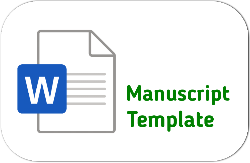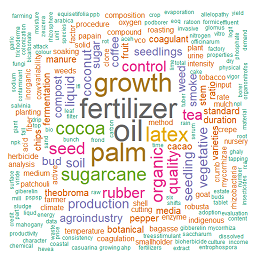Karakteristik Agronomi Tanaman Kapas (Gossypium sp.) dan Pengaruhnya terhadap Produksi Kapas Menggunakan Analisis Lintas
DOI:
https://doi.org/10.25181/jaip.v11i1.2677Keywords:
correlation analysis, cotton, direct selection, path analysisAbstract
The cotton plant is a fiber plant that is commonly used as a raw material for textiles, beauty, and health products. To increase cotton production, the development of superior varieties using plant breeding methods in cross-analysis is necessary. The cross-analysis method is used to determine the agronomic traits that affect cotton production, by selecting yield through several other characteristics related to yield. The aim of this study was to identify which agronomic characters can be used as selection criteria to increase cotton production using cross-analysis. The research was conducted at Politeknik Negeri Jember, and included 12 independent variables and one response variable, namely cotton production. The method used in this study was to perform correlation analysis, cross-analysis, calculate direct and residual contributions, and select agronomic characters that can be used as selection criteria. The results showed that the number of fruit characters had the highest correlation with cotton production (RX9Y = 0.835). Cross-analysis was carried out, and the highest direct effect was found between the number of fruit characters and cotton production (PX9Y = 0.971). The highest direct contribution was found in the character of the number of fruit, which had a total contribution of 98.321% and residue of 1.679%. Therefore, the agronomic character that can be used as a direct selection criterion is the number of fruits.Downloads
References
Abdullah, M., Numan, M., Shafique, M. S., Shakoor, A., Rehman, S., & Ahmad, M. I. (2016). Genetic variability and interrelationship of various agronomic traits using correlation and path analysis in cotton (Gossypium hirsutum L.). Academia Journal of Agricultural Research, 4(6), 315–318. https://doi.org/10.15413/AJAR.2016.0154
Akhmadi, G., Purwoko, B. S., Dewi, I. S., & Wirnas, dan D. (2017). Pemilihan karakter agronomi untuk seleksi pada galur-galur padi dihaploid hasil kultur antera. Jurnal Agronomi Indonesia (Indonesian Journal of Agronomy), 45(1), 1–8. https://doi.org/10.24831/JAI.V45I1.13681
Bachtiar, Y., .Yuliawati, Y., Setyono, S., & Rahayu, A. (2020). Korelasi dan analisis lintas karakter agronomi kacang bogor (Vigna subterranea L. Verdc.). Jurnal Agronida, 6(2). https://doi.org/10.30997/JAG.V6I2.3353
Bahagiawati, B., & Bermawie, N. (2018). Potensi Sumbangan kapas bt untuk peningkatan produksi kapas di Indonesia. Jurnal AgroBiogen, 13(2), 137–146. https://doi.org/10.21082/jbio.v13n2.2017.p137-146
Direktorat Jenderal Perkebunan. (2022). Buku Statistik Perkebunan 2019-2021. https://ditjenbun.pertanian.go.id/?publikasi=buku-statistik-perkebunan-2019-2021
Gaspersz, P. (1992). Teknik Analisis dalam Perancangan Percobaan. Tarsito.
Harlianingtyas, I., & Salim, A. (2021). Pengantar Statistika Teori dan Aplikasi. Polije Press.
Harsanti, L., Dwimahyani, I., & Tarmizi. (2017). Perbaikan produksi kapas (Gossypium hirsutum) varietas Niab 999 dengan teknik mutasi radiasi. Jurnal Ilmiah Aplikasi Isotop Dan Radiasi, 13(1), 59–68. https://doi.org/http://dx.doi.org/10.17146/jair.2017.13.1.3962
Hidayat, R. T., Soegianto, A., & Aini, P. N. (2021). Analisis korelasi, regresi dan evaluasi karakter morfologi 24 aksesi kapas (Gossypium sp.). Agrin, 24(1), 81–93. https://doi.org/10.20884/1.AGRIN.2020.24.1.513
Lelang, M. A. (2017). Uji korelasi dan analisis lintas terhadap karakter komponen pertumbuhan dan karakter hasil tanaman tomat (Lycopersicum esculentum Mill). Savana Cendana, 2(02), 33–35. https://doi.org/10.32938/sc.v2i02.90
Peni, P., Mustiawan, A., & Yamin, M. (2018). Karakter agronomi kapas (Gossypium hirsutum) var. Kanesia 10 di Kota Palopo. Prosiding, 4(1). http://www.journal.uncp.ac.id/index.php/proceding/article/view/1316/1135
Rachmawati, R. Y., Kuswanto, K., & Purnamaningsih, S. L. (2014). Uji keseragaman dan analisis sidik lintas antara karakter agronomis dengan hasil pada tujuh genotip padi hibrida Japonica. Jurnal Produksi Tanaman, 2(4), 127813. https://doi.org/10.21176/PROTAN.V2I4.109
Rahman, S. A., Iqbal, M. S., Riaz, M., Abid, M., Shahid, M. R., Abbas, G., & Farooq, J. (2013). Cause and effect estimates for yield contributing and morphological traits in upland cotton (Gossypium hirsutum L.). J. Agric. Res, 4(51), 393–398.
Salim, A., Setyoko, U., & Oktaviasari, P. (2021). Determination of agronomic properties of tobacco (Nicotiana tabaccum L.) voor-oogst on krosok production using path analysis. IOP Conference Series: Earth and Environmental Science, 759(1), 012036. https://doi.org/10.1088/1755-1315/759/1/012036
Saputra, T. E., Barmawi, M., Ermawati, & Sa`diyah, N. (2015). Korelasi dan analisis lintas komponen komponen hasil kedelai famili F6 hasil persilangan Wilis X B3570. Jurnal Penelitian Pertanian Terapan, 16(1), 54–60. https://doi.org/10.25181/jppt.v16i1.76
Singh, R. K., & Chaudhary, B. D. (1979). Biometrical methods in quantitative genetic analysis. In Biometrical Methods in Quantitative Genetic Analysis. Kalyani.
Triant, W. N. M., Purnamaningsih, S. L., Respartijarti, & Sulistyowati, E. (2015). Uji daya hasil pendahuluan delapan galur F6 kapas (Gossypium hirsutum L.) serat warna coklat. Jurnal Produksi Tanaman, 3(2), 129653. https://doi.org/10.21176/protan.v3i2.197
Umufatdilah, E., & Adiredjo, A. L. (2019). Analisa regresi dan korelasi beberapa karakter tanaman kenaf (Hibiscus cannabibus L.) generasi F2 hasil persilangan varietas HC48 dan SM004. Jurnal Produksi Tanaman, 7(4), 637-642.
Downloads
Published
How to Cite
Issue
Section
License
Copyright (c) 2023 Virda Fauziah, Ujang Setyoko, Abdurrahman Salim, Abdul Madjid

This work is licensed under a Creative Commons Attribution-ShareAlike 4.0 International License.
Authors who publish with Jurnal Agro Industri Perkebunan agree to the following terms:
Authors retain copyright and grant the Jurnal Agro Industri Perkebunan right of first publication with the work simultaneously licensed under a Creative Commons Attribution License (CC BY-SA 4.0) that allows others to share (copy and redistribute the material in any medium or format) and adapt (remix, transform, and build upon the material for any purpose, even commercially) with an acknowledgment of the work's authorship and initial publication in Jurnal Agro Industri Perkebunan.
Authors are able to enter into separate, additional contractual arrangements for the non-exclusive distribution of the journal's published version of the work (e.g., post it to an institutional repository or publish it in a book), with an acknowledgment of its initial publication in Jurnal Agro Industri Perkebunan. Authors are permitted and encouraged to post their work online (e.g., in institutional repositories or on their website) prior to and during the submission process, as it can lead to productive exchanges, as well as earlier and greater citation of published work.


























